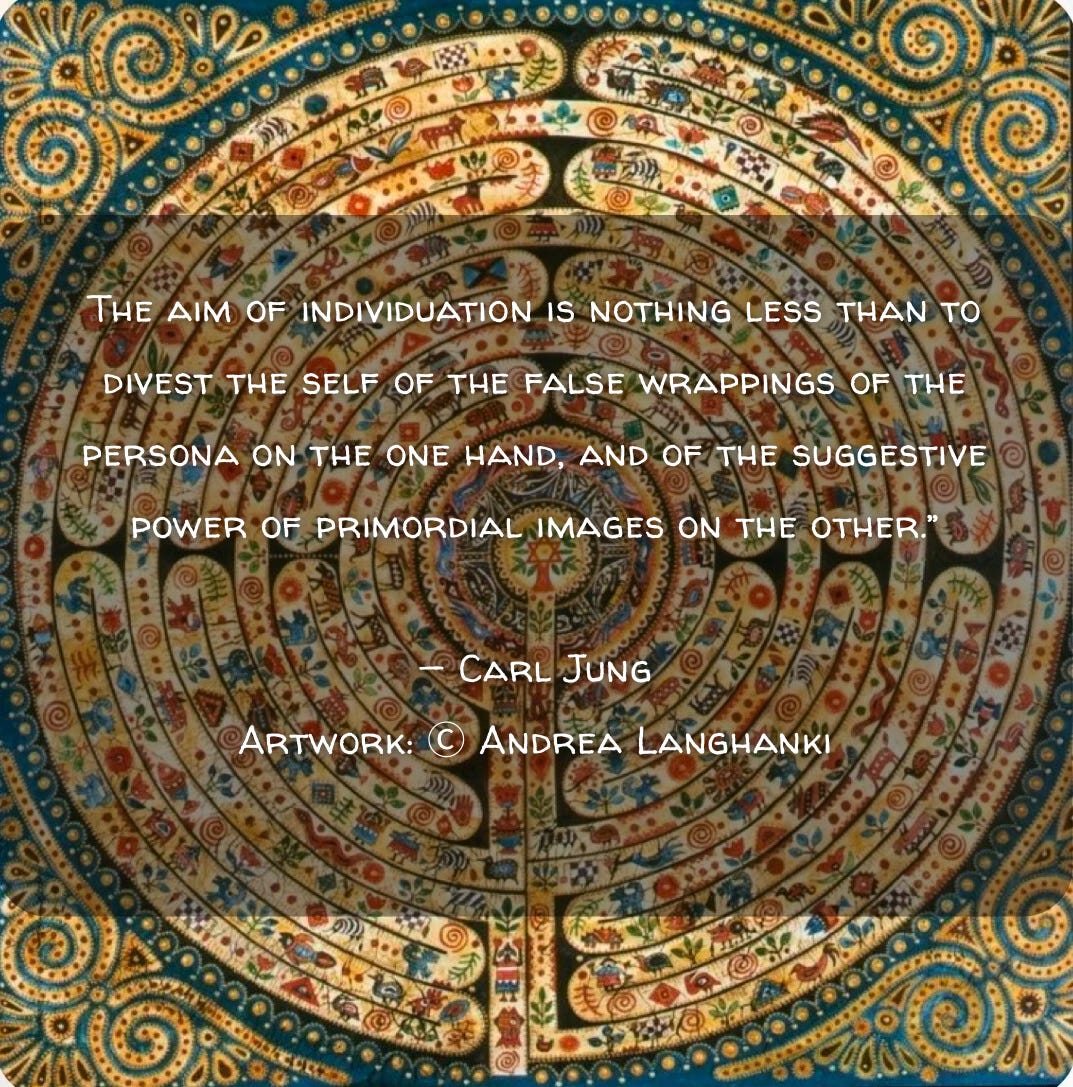The Difference and Overlap Between Shadow and Archetypal Work (I)
This is a foundational article for all spiritual seekers. Part I of The Series.
So many people confuse shadow work with the hero(ine)’s journey or think archetypes are interchangeable.
We don’t need two separate archetypal systems because the cosmos “likes more complexity.” We need them because the human psyche has different levels of engagement with transformation.
Hence, by separating the function, we engage with our psyche in multi-dimensional ways. This is deeply empowering because it shifts us from being passive witnesses of fate into active co-weavers of our transformation.
For example, one person doing shadow work can realise “Oh, I’m in the Orphan stage (I’ve lost my story)… but also the Grief Tender in me needs to come online to hold that loss.”
This quote beautifully names the two poles: the false wrappings of the persona (shadow work, ego roles, internalised judgments) and the suggestive power of primordial images (archetypes, mythic journeys, the symbolic imagination). Jung is essentially saying: “We are not only trapped by our masks, but also by our unconscious identification with archetypes unless we relate to them consciously.”
And that is the core of the message in this article: shadow archetypes are not the same as mythic archetypes. Both influence us and both must be related to, not fused with.
Let’s see why:
1. The Map is Not the Mirror
The Hero(ine)’s journey archetypes are narrative and have a role to guide us. They are the stages of becoming, mapping the path of our transformation :
“Where am I in the spiral of selfhood?”
In contrast, the shadow integration archetypes are psychodynamic. They reflect the inner characters, the parts, who show up within each mythic stage, and need to be seen, worked with, or healed.
Put it another way, the hero(ine)’s journey is the sacred choreography. The Shadow Archetypes are the cast of characters playing it out inside of us.
2. Archetypes Change Roles Depending On the Context
An archetype can have the same name, same essence but different functions! (as previously mentioned: either as a goal in the hero(ine)’s journey or as a resource in shadow work).
3. The Mythic Doesn’t Replace the Psychological, It Activates It
People are drawn to myth because it feels true before they understand it. But unless that mythic story is brought into the somatic and emotional body, it risks becoming spiritual bypass.
That’s why we need the shadow archetypes. They’re the ones who help us integrate the wound, name the disowned voices and hold space for contradiction and complexity. Without them, the hero(ine)’s journey becomes an abstraction and shadow work becomes endless a loop of self-analysis without transformation.
The most common example: endlessly searching, unearthing and analysing, processing pain instead of embodying wholeness and gaining insight instead of truly integrating the shadow.
This goes not only for the shadows, but for new wounds, patterns, or inner critics.
4. Initiation is Both a Story and a Surgery
The process starts to feel like maintenance, not initiation. You steer away from your path by forgetting that you’re here to become, not just to cope. Sounds familiar? It sure does because this is what you will often encounter in modern spirituality today.
That’s why people need a mythic map to feel the grandeur and meaning and inner archetypal tools to actually survive the process. This is how nervous systems are guided through ego death. Without a mythic container or a telos1, shadow work can easily spiral into self-fixation, over-identification with trauma, chronic self-improvement and a subtle addiction to “healing” as a form of delay.
For example, the current astrological rare Saturn-Neptune retrograde conjunction is not just a plot twist, it’s a dismantling of structure and identity. You can read more about it in my article especially through the Axiom of Maria and the Saturn–Neptune trials (more about this in part II). These are all telos-driven. The journey unfolds in two dimensions:
The mythic, where the soul follows its sacred spiral of becoming and
The psychological, where inner archetypes emerge to be witnessed, healed, and integrated.
One map doesn’t replace the other, they complete each other. We are both the hero(ine) of our story and the healer of our wound.
Take away: Shadow work is powerful, but it’s incomplete on its own.





